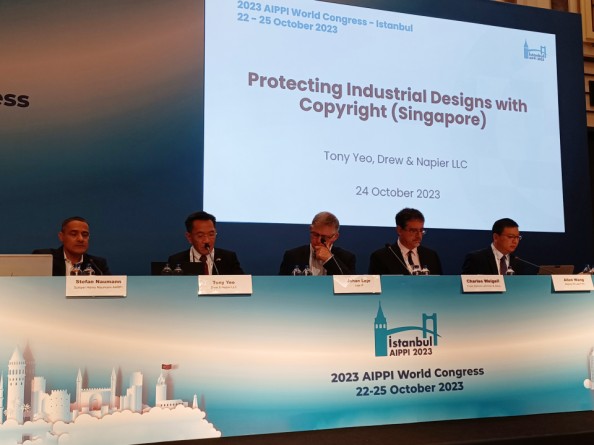Ten years ago, AIPPI adopted a resolution addressing the relationship between industrial product design and copyright infringement. However, despite this initial effort, there is still more work to be done on the matter in international courts. Additionally, the rise of virtual reality technology introduced even more complex issues for intellectual property holders dealing with intangible assets in these novel settings, possibly necessitating expanding their legally enforceable rights.
The recent panel session at the 2023 AIPPI World Congress at the Hilton Istanbul Bomonti Hotel & Conference Center shed light on these issues. Four prominent figures in the industry – Tony Yeo, managing director at Drew & Napier in Singapore; Allen Wang, managing partner at Beijing TA Law Firm in Beijing; Johan Løje, a partner at LØJE-IP in Copenhagen; and Charles Weigell, a partner at Fross Zelnick in New York – addressed the current developments and to what extent industrial designs can be protected by copyrights.
In Singapore, a design generally refers to “features of shape, configuration, colors, pattern, of ornaments applied to any article or non-physical product that give that article or non-physical products its appearance.” However, this excludes computer programs, layout designs and designs contrary to public order or morality.
“Singapore legislation provides that copyright protection is not available to designs registered under RDA,” said Yeo. “Even after the term for the design right has ended, this scope of the exception to copyright protection expands to cover all associated designs of articles and non-physical products. Even if the corresponding design has not been registered, once there is an industrial application and commercial dealing of the industrial design, there can be no copyright protection.”
Meanwhile, in China, the establishment of IP courts has helped improve the efficiency and specialization of industrial design and copyright protection. Wang noted that copyright protection is available for “qualified industrial products with artistic aesthetics in addition to design patents. Where protection can be provided by the Patent Law, Trademark Law, or Anti-Unfair Competition Law, it does not affect the party’s right to claim copyright protection for the artistic and aesthetic part of an industrial design that is original.”
For copyright protection, the work of practical art must be original, artistic, practical and reproducible, with separable artistic and practical elements.
In the UK and the EU, new legal additions aims to address the requirements of product protection under copyright law. However, doubts still persist in the gray area of the law. Løje emphasized that a subject may not receive copyright protection if its design is purely dictated by technical or utilitarian constraints, leaving no room for creative freedom. In such cases, the subject matter may lack the originality required for copyright protection.
Weigell added: “A useful article is something that has an intrinsic use beyond displaying the appearance of the item or conveying information. A useful article, in and of itself, does not enjoy copyright protection. However, the pictorial, graphic or sculptural features of the design of a useful article are copyrightable if they can be identified separately from and are capable of existing independently of the utilitarian aspects of the article or those that make it useful.”
- Excel V. Dyquiangco







